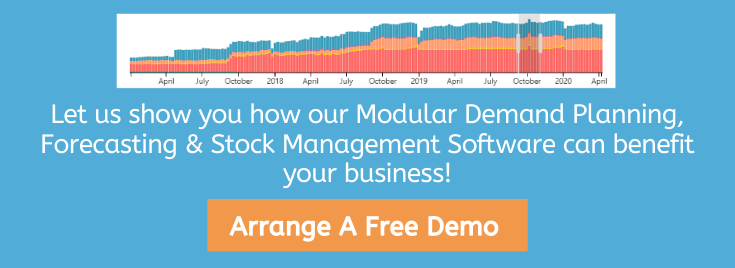‘Prediction is difficult, particularly when it involves the future,’ said Mark Twain, probably more than a little ironically, but demand forecasting is central to the success of manufacturing operations. Without it, it’s virtually impossible to accurately calculate how many of a product should be manufactured within a given period, not to mention ordering the appropriate amount of raw materials and deploying staff effectively on the production line.

Learn What Demand Forecasting Isn’t
Demand forecasting isn’t a direct copy of past sales figures, framed as the future’s sales figures. It is an extrapolation of the future, based on past sales figures combined with current events and what those events might do to demand. Demand forecasting also is not a black and white representation of demand. For example, from time to time sales figures may plummet despite demand being high, such as in economic slumps or in the final week leading up to payday when bank balances are at their lowest.
Understand Your Products
If consistent sales start to wane, ask searching questions about the product to help forecast demand more accurately: is the product approaching the end of its lifecycle? Are customers returning to purchasing it again? Have you taken full advantage of trends, such as seasonal fashions or the newest must-have accessory to hit the market?
Also, interrogate customer feedback as visible reviews will often act as an engine for future demand. Planning in response to positive customer reviews can help ensure that you’re manufacturing new stock on time, minimising delays and maximising the supply chain.
Minimise Delays
Demand forecasting is not just about sales figures but should integrate with your supply chain and inventory management to reduce delays. A fully integrated supply-demand model will enable you to respond to increased demand rapidly, minimising delays and proving that your business has the adaptability and flexibility to compete in the market. Equally, investing in an inventory management system can make sure that you can respond to fluctuations in demand for different products.
Anticipate The Winds Of Change
With demand forecasting, it’s easy to look inwardly at your business, focusing only on past sales data, the cost and availability of raw materials, customer demographics, and so on. But demand for a product is sometimes motivated as much by events in the wider world as by its previous popularity. While it may not be possible to predict that a certain high street retailer’s latest vegan snack may be a surprise hit, some long-term patterns are easier to anticipate.
Be Equipped For The Future
At Reflex Planning, our demand forecasting and inventory management solutions can transform your business, so why not get in touch today to arrange a free demo of the software, and see for yourself how it could help your enterprise grow?

